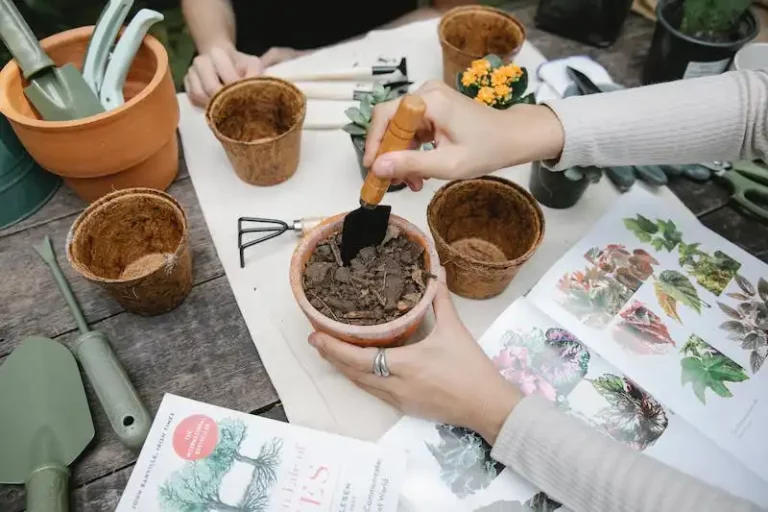Chrysanthemums, or mums for short, are popular and versatile flowers that come in a wide variety of shapes, sizes, and colors. They are fast-growing plants that can quickly fill up your garden with vibrant blooms. Chrysanthemums have daisy-like flowers with numerous florets, packed together tightly in a round shape. They have strong stems that can hold up the weight of these beautiful flowers.
One interesting fact about chrysanthemums is that they come in different blooming times. Some varieties are early-season bloomers, while others bloom late in the season. This makes it possible to have chrysanthemums in your garden throughout the year. In addition, chrysanthemums are hardy plants that can tolerate a wide range of conditions, including shade and somewhat acidic soil.
When it comes to caring for chrysanthemums, there are a few important things to keep in mind. First, make sure to plant them in an area with good air circulation to prevent diseases. Mums can be prone to pests, such as thrips, so it’s essential to regularly inspect your plants for any signs of infestation. In terms of watering, chrysanthemums prefer moist but not soggy soil, so be sure to water them regularly. If you notice that the soil is staying too wet, reduce the frequency of watering to prevent root rot.
To promote bushier growth and more profuse blooms, it’s recommended to pinch back the chrysanthemum plants. This involves removing the top portion of the stems, which will encourage the plants to produce more side shoots. Additionally, fertilizing your chrysanthemums with a time-released fertilizer can help provide them with the necessary nutrients throughout the growing season.
Chrysanthemums are versatile plants that can be grown in the ground or in containers. They can be planted in the garden once the danger of frost has passed, or they can be started indoors and then transplanted outside. One common practice is to plant chrysanthemums alongside other hardy perennials, such as sedum, to add variety and create a visually appealing garden.
In conclusion, chrysanthemums are beautiful and easy-to-grow flowers that can be a colorful addition to any garden. With proper care and attention, these hardy plants will reward you with an abundance of blooms that can last throughout the season.
Chrysanthemum Garden
Chrysanthemums, commonly known as mums, are a popular choice for garden enthusiasts. These beautiful flowers are frost tolerant, making them perfect for colder climates. They bloom in a variety of colors and can add a burst of vibrancy to any garden or landscape.
Chrysanthemum gardens are a sight to behold when in full bloom. The flowering plants create a sea of color, with each bloom capturing attention. Their close-up view allows one to appreciate the intricate details of the petals, which can range from curled to disc-shaped.
One thing to note about chrysanthemum gardens is that these flowers are toxic to cats, so it’s important to be cautious if you have feline friends in your household. However, they are safe for humans.
Gardening tips for chrysanthemum gardens include finding a spot that provides full sun or partial shade. Chrysanthemums grow best in well-drained soil and can be grown from seeds or transplanted from nursery-bought plants. If you choose to grow from seeds, start early in the season to allow ample time for them to mature.
To keep your chrysanthemum garden healthy, be sure to water them regularly and provide support for their stems as they grow. Some gardeners find that repotting their chrysanthemums every couple of years helps them stay strong and bloom better.
Chrysanthemums are fast growers and can benefit from regular shearing to promote bushier growth. Deadheading spent blooms will also encourage further blooms. However, be careful not to shear too late in the growing season, as this can lead to wilting and the risk of frost damage.
Mildew can be an issue for chrysanthemums, but planting them in well-spaced rows and providing good air circulation can help prevent this problem. If you notice signs of powdery mildew, which is a white fungal growth on the leaves, take action to treat it early.
Chrysanthemums come in many different types, from the hardy and dependable garden mums to the more delicate and aromatic varieties like the Chrysanthemum morifolium. These flowers can give your garden a burst of color and fragrance throughout the warm months.
So, if you’re looking to add a splash of color to your garden, consider planting a chrysanthemum garden. With their vibrant blooms and variety of types, these flowers are sure to brighten up any landscape. Just be sure to keep an eye out for any signs of toxicity, especially if you have cats, and enjoy the cooperative growing experience with these wonderful plants.
Hardy Chrysanthemum Care
Chrysanthemums, or “mums” as they are commonly called, are a bright and colorful addition to any garden. They are hardy plants that can withstand a wide range of climates and are often grown in zones 3 to 9. Chrysanthemums come in a variety of colors and types, including the popular Chrysanthemum morifolium, and are known for their wonderful flower formations.
When caring for hardy chrysanthemums, it is important to provide them with the right conditions to thrive. Plant them in well-drained soil, about 18 inches apart, and ensure they receive at least six hours of sunlight per day. Fertilize the plants in the early spring and throughout the growing season with a balanced fertilizer to promote healthy growth and abundant blooms.
Chrysanthemums can be planted throughout the spring and summer, but it is recommended to plant them in early September to allow enough time for root establishment before winter. When planting, make sure to remove any dried or dead flowers called “disc flowers” to encourage new growth. Chrysanthemum varieties include both single and double blooms, and they can range from large and showy to small and delicate.
One of the main concerns when caring for hardy chrysanthemums is keeping them free from pests and diseases. Regularly inspect the plants for any signs of fungal diseases, such as powdery mildew or rust, and treat them accordingly. Additionally, watch out for pests like thrips, which can damage the flowers and foliage. If necessary, use organic or chemical controls to manage these issues.
Hardy chrysanthemums may require pruning to keep them neat and tidy. Pinch back the stems in the early summer, when the plants reach a height of 6-8 inches, to encourage branching and more flower production. However, be cautious not to prune them too late in the season, as this can lead to reduced winter hardiness.
Overwintering chrysanthemums can be a challenge, as they are not as cold hardy as other perennial plants. Consider covering the plants with a layer of mulch or straw to protect them from harsh winter conditions. Additionally, some gardeners prefer to dig up the plants and store them in a cool, dark place until spring.
With proper care, hardy chrysanthemums can multiply and continue to bloom year after year. Their profuse and aromatic flowers make them a popular choice for garden borders and close-up displays. Whether you are a seasoned gardener or just starting out, caring for chrysanthemums is a rewarding and enjoyable experience.
To learn more about how to care for hardy chrysanthemums and get more tips on growing these beautiful flowers, consult your local cooperative extension or search online resources for detailed information.
Light
Chrysanthemums thrive in full sunlight, so it’s important to choose a location where they can receive at least six hours of direct sunlight each day. However, they can also tolerate some shade, especially in hot climates where they may need protection from the intense afternoon sun.
When selecting a spot for your chrysanthemums, keep in mind that they prefer well-drained soil. If the soil is too soggy or stays wet for long periods, it can lead to root rot and other problems. Additionally, chrysanthemums grown in full sun generally have shorter stems and more compact growth, while those grown in partial shade may have longer stems and a looser, bushier shape.
Proper spacing is key when planting chrysanthemums. They tend to spread out as they grow, so make sure to leave enough space between each plant to allow for proper air circulation and prevent the spread of fungal diseases. A general rule of thumb is to space plants about 18 to 24 inches apart.
Chrysanthemums are hardy plants that can withstand a variety of weather conditions, but some cultivars may be more sensitive to extreme heat or cold. If you live in an area with harsh winters, you may need to provide extra protection for your chrysanthemums, such as covering them with a layer of mulch or bringing them indoors when temperatures drop below freezing.
In terms of water requirements, chrysanthemums generally prefer a moderate amount of moisture. Water them once a week, or more frequently if you notice that the soil is dry. Avoid overwatering, as this can lead to root rot and other problems. It’s also important to water chrysanthemums at the base of the plant, rather than overhead, to help prevent fungal diseases.
While chrysanthemums are relatively low-maintenance plants, they can benefit from some additional care and attention. Pinching off the tips of the stems in spring can encourage bushier growth and more abundant blooms. Deadheading, or removing spent flowers, can also help prolong the blooming period and keep the plant looking neat and tidy.
Chrysanthemums are available in a wide range of colors and forms, including daisy-like flowers, pompons, and more. Some varieties even have double or semi-double flowers, which adds to their visual appeal. Whether you’re a seasoned gardener or a novice, growing chrysanthemums can be a rewarding experience, as these hardy flowers are beautiful additions to any garden or landscape.
Water
Water is essential for the growth and health of chrysanthemum flowers. To have thriving blooms, it is important to provide them with an adequate and consistent water supply.
Chrysanthemum flowers should be watered at the base, making sure to avoid getting the leaves and center of the plant wet. Overhead watering can promote diseases and fungus growth. By watering at the base, you ensure that the water reaches the roots, where it is needed the most.
Chrysanthemums have a shallow root system, so it is important not to let the soil dry out completely. They prefer a slightly moist soil, but not waterlogged. To determine when to water, gently stick your finger about an inch into the soil near the plant. If it feels dry at that depth, it’s time to water.
The watering requirements for chrysanthemums can vary depending on factors such as the type of chrysanthemum, humidity, and temperature. In general, they need about 1 inch of water per week. This amount should be adjusted based on the weather conditions. During hot and dry periods, you may need to water more frequently. Chrysanthemum plants also benefit from mulching around the base to help conserve moisture and regulate soil temperature.
When watering your chrysanthemums, be careful not to wet the foliage as this can lead to diseases. Watering in the early morning or late afternoon can help prevent the leaves from staying wet for too long. Watering in the middle of the day can cause the water to evaporate quickly due to the heat, without providing enough time for the plant to absorb it properly.
In addition to regular watering, chrysanthemums may require extra watering during the flowering period. This is especially important for those planted in containers, where they may dry out faster than those in the ground. Keep a close eye on the moisture level and water accordingly.
Signs of underwatering in chrysanthemums include drooping leaves and dry, crispy edges. On the other hand, overwatering can lead to root rot and wilting. It’s important to strike a balance and provide just the right amount of water for your plants.

